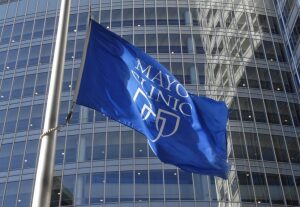by
Valerie Dimond, Contributing Reporter | June 29, 2020
Although financial worries are front and center for most hospitals, some are faring better than others. Increased outpatient visits and procedural and surgical volumes at Mayo Clinic, for example, have allowed the organization last week to start giving employees a full paycheck again, and it has said furloughed workers will also be able to return to work in late August, which it announced is ahead of schedule.
“Because of these positive trends, Mayo Clinic will restore pay to pre-COVID-19 levels for all staff except senior leadership in mid-July,” said the organization in a news release. “The pay restoration will be realized in the July paycheck, months sooner than had been anticipated.”
Other organizations are also making a comeback, although margins are still below what they were this time last year. According to Kaufman Hall’s June National Hospital Flash Report, most hospital margins have improved significantly in May due to $50 billion in federal emergency CARES Act funding and an uptick in volumes. However, without that federal assistance, the median margin would have been –8%. Furloughs and other cost control actions also allowed many hospitals to reduce actual expenses, which were lower than they were during the same time period last year. However, researchers say hospitals aren’t out of the woods yet, especially as coronavirus cases rise again.



Ad Statistics
Times Displayed: 78539
Times Visited: 2794 Ampronix, a Top Master Distributor for Sony Medical, provides Sales, Service & Exchanges for Sony Surgical Displays, Printers, & More. Rely on Us for Expert Support Tailored to Your Needs. Email info@ampronix.com or Call 949-273-8000 for Premier Pricing.
“The May results provide a glimmer of hope for our nation’s hospitals, but they also serve as a stark reminder of the long road ahead,” said Jim Blake, managing director, Kaufman Hall, in a statement. “This pandemic is far from over, and the path to recovery will be arduous. Different organizations will move at different speeds as healthcare leaders continue to navigate the clinical, operational, and financial impacts of an unpredictable virus, and shape their organization’s role in a post-COVID-19 environment.”
In fact, other healthcare organizations continue to see decreases in patient volume, including Memorial Health System in Illinois, which recently announced its decision to
furlough 460 workers until September and reduce worker benefits. They say leadership compensation has also plummeted as much as 30%.
According to a new analysis by Altarum, close to 90% of medical groups and integrated health systems
report losing a quarter or more in revenue as a result of the ongoing COVID-19 pandemic. Forty-one percent of healthcare systems and 36% of medical groups predict it will be at least a year before revenues return to pre-COVID levels, with many not expecting to see such results until at least the second quarter of 2021.
An earlier survey from Kaufman Hall also revealed that today 87% of respondents felt that cost reduction is among the most important financial performance activities for their organizations. Yet 76% said that resource constraints are impacting effective financial planning and analysis, underscoring the need for a more widespread cost transformation effort.
“Rather than just reducing costs, however, financial executives understand that current service offerings must be delivered efficiently to preserve margins under tightening payment pressures. Achieving this level of cost transformation will free up resources for investment in new technologies, sites of care, and care delivery models, while addressing changing demand and new competition within the healthcare market,” the researchers said. “Many organizations are unprepared to do so, however, as 54% of those surveyed say they have insufficient data, benchmarking and reporting tools to completely support efforts to lower costs without compromising the quality of care; an additional 15% say they currently have no tools in place.”

